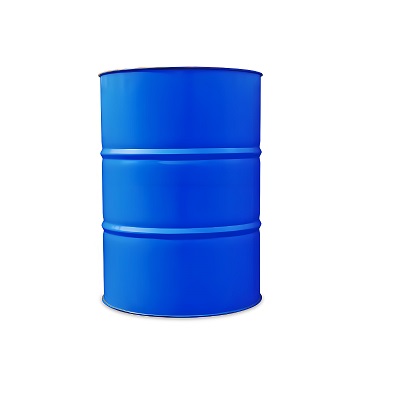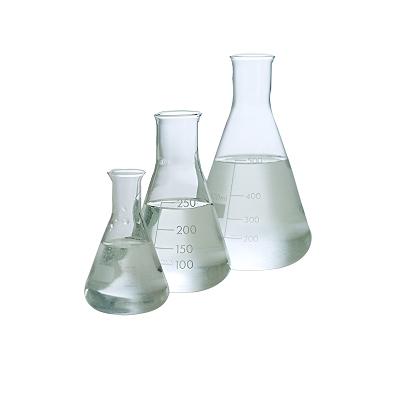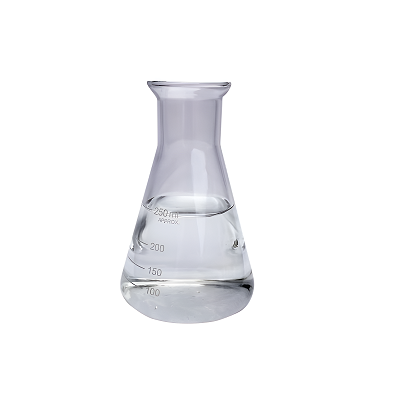

Acetylacetone CAS 123-54-6
——————
CAS number : 123-54-6
molecular formula : C5H8O2
EINECS : 204-634-0
——————
Email : info@deshangchem.com
Mobile : 8613153039501
TEL : +86-531-88752665
CAS number:123-54-6
molecular formula:C5H8O2
molecular weight:100.12
EINECS number:204-634-0
English synonyms
acetyl;Acetyl 2-propanone;acetyl-2-propanon;acetyl2-propanone;acetyl-aceton;CH3COCH2COCH3;pentan-2,4-dione;Pentanedione
Related categories
Fungicide intermediates; chemical industry; carbonyl compounds; analytical standards; organic raw materials; biologically active small molecules; organic chemistry; proteomics; intermediates; ketones; pesticide intermediates; other types of fungicides; gas chromatography standards standard); ketones; chemical daily chemicals; industrial raw materials; chemical reagents; organic chemical raw materials; main products; feed additives; inorganic acids; ketones; chemical products-organic chemicals; pharmaceutical, pesticide and dye intermediates; chemical materials; organic Intermediates; Chemical intermediates; Elemental substances; Chemical raw materials; Kits-Elisa kits; Pharmaceutical Intermediates; straightchain compounds; Aromatic Ketones (substituted); Organics; ketone; Environmentally-friendlyOxidation; ;AmberGlassBottles;AnalyticalReagents;AnalyticalReagentsforGeneralUse;Analytical/Chromatography;BioactiveSmallMolecules;CellBiology;Purissp.a.;SolventBottles;SolventPackagingOptions;Solvents;Pharmamaterial;Itisacolourlessliquid;Other raw materials;Organic chemical reagents;
Introduction
Acetylacetone, also known as diacetylmethane and pentanedione, is a derivative of acetone with the molecular formula CH3COCH2COCH3, a colorless to pale yellow transparent liquid. It is usually a mixture of enol and keto tautomers. The two are in dynamic equilibrium. The enol isomer forms hydrogen bonds in the molecule. In the mixture, the ketone accounts for about 18%, and the enol formula accounted for 82%. Cool the petroleum ether solution of the mixture to -78°C, the enol form will be precipitated in solid form, and the two will be separated; when the enol form returns to room temperature, it will automatically be in the above equilibrium state.
Chemical properties
| Melting point | -23°C(lit.) |
| Boiling point | 140.4°C(lit.) |
| Density | 0.975g/mLat25°C(lit.) |
| Vapour density | 3.5(vsair) |
| Vapor Pressure | 6mmHg(20°C) |
| Refractive index | n20/D1.452(lit.) |
| Flash point | 66°F |
| Storage conditions | Storebelow+30°C. |
| Solubility | H2O:soluble1in8parts |
| Shape | Liquid |
| Acidity coefficient(pKa) | 8.9(at25℃) |
| Color | verydeepgreen-yellow |
| Odor | pleasantodor |
| pH value | 6(200g/l,H2O,20℃) |
| relative polarity | 0.571 |
| Exposure Limits | 2.4-11.4%(V) |
| Water solubility | 16g/100mL(20ºC) |
| Merck | 14,81 |
| BRN | 741937 |
| Exposure Limits | No exposure limit has been set. |
| InChIKey | YRKCREAYFQTBPV-UHFFFAOYSA-N |
| LogP | 0.68at20℃ |
| CAS database | 123-54-6(CASDataBaseReference) |
This product is colorless or yellowish transparent liquid with unpleasant odor, m.p.-23℃, b.p.140.4℃, n20D1.4520, relative density 0.975, miscible with ethanol, ether, chloroform, acetone, glacial acetic acid and other organic solvents , soluble in water, this product is flammable and corrosive
Use
● Pentadione, also known as acetylacetone, is an intermediate of the fungicides azoxystrobin, azoxystrobin and the herbicide rimsulfuron.
● Used as pharmaceutical raw materials and organic intermediates, and also as solvents
● Used as analytical reagent and extraction agent for aluminum in tungsten and molybdenum
● Acetylacetone is an intermediate in organic synthesis, and it can form amino-4,6-dimethylpyrimidine with guanidine, which is an important pharmaceutical raw material. It can be used as a solvent for cellulose acetate, an additive for gasoline and lubricants, a desiccant for paints and varnishes, a fungicide, and an insecticide. Acetylacetone can also be used as a catalyst for petroleum cracking, hydrogenation and carbonylation reactions, and an oxygen oxidation promoter. It can be used to remove metal oxides in porous solids and to treat polypropylene catalysts, etc. More than 50% of it is used in livestock antidiarrheal drugs and feed additives in European and American countries.
● In addition to the typical properties of alcohols and ketones, it also has a deep red color with ferric chloride and forms chelates with many metal salts. By the condensation of acetic anhydride or acetyl chloride and acetone, or by the reaction of acetone and ketene. Used as metal extractant to separate trivalent and tetravalent ions, paint and ink desiccant, pesticide insecticide, fungicide, polymer solvent, reagent for determination of thallium, iron, fluorine and organic synthesis intermediates, etc.
● Transition metal chelating agent. Colorimetric determination of iron and fluorine, determination of thallium in the presence of carbon disulfide.
● Fe(III) complexometric titration indicator; used for guanidine (eg Arg) and amino modification in proteins
● Used as a transition metal chelating agent; for the colorimetric determination of iron and fluorine, and for the determination of thallium in the presence of carbon disulfide
● An indicator for iron(III) complexometric titration. Used to modify guanidine groups in proteins and amino groups in proteins.
Production method
● Different routes are available: reaction of acetone with ketene or condensation of acetic anhydride with acetone or condensation of acetone with ethyl acetate. The reaction process of acetone and vinyl ketone is actually acetone as raw material, through vinyl ketone, isopropenyl acetate, and then converted to acetylacetone; the process is as follows: acetone containing 1/1000 carbon disulfide is gasified and then introduced Cracking furnace at 780-800°C to generate ketene (or glacial acetic acid in the presence of gasified triethyl phosphate catalyst, ammonia as stabilizer, cracked into ketene at 700°C cracking furnace), ketene absorbed by acetone , In the presence of sulfuric acid or acetylsulfonyl, react with acetic acid at 61-71 ° C to form isopropenyl acetate. After fractional distillation and purification, the purity of isopropenyl acetate can reach more than 93-95%. Then gasify isopropenyl acetate, introduce it into a reformer preheated to 560-570°C, generate acetylacetone through molecular rearrangement, condense, fractionate and purify to obtain the finished product. About 2700kg of acetone is consumed per ton of product. The process of condensation of acetone and ethyl acetate is carried out in the presence of metallic sodium. Operation Example 1 Add 120ml of refined ethyl acetate and 32ml of ammonia to a cooled beaker. After the addition of sodium amide, shake continuously in ice water for 24h, and then place it overnight at room temperature. The next day, add 100g of ice, then add the same amount of ice water, take the water layer, and add dilute sulfuric acid to make it acidic. Add saturated copper acetate solution (dissolve 40g of powdered copper acetate with a certain amount of hot water) into this solution to make acetylacetone form copper salt and precipitate. If the reaction solution is alkaline, a small amount of acetic acid can be added. After 2-3 hours, filter the blue-gray acetylacetone with suction, wash it twice with water, transfer it directly into a separatory funnel, add diethyl ether and shake continuously, and at the same time add 50ml of 4N sulfuric acid to decompose it. Take the ether solution, then extract the acetylacetone in the acid layer with ether, combine the two ether solutions, and dry with calcium chloride. Distill the ether to remove the residue and continue to distill, collecting fractions at 125-140°C. Then concentrate at 135-140°C, and the yield is about 15-20g. The boiling point is 139°C. Operation Example 2 In a 1500ml round bottom flask, add 25g of sodium metal and 20ml of ether, and then add 225ml of ethyl acetate cooled with a coolant. 73 ml of acetone were added under cooling and constant stirring. Stand at room temperature for 4 hours, add 400ml of water, separate the ethyl acetate in the water layer, neutralize the water layer with acetic acid, then add copper acetate solution (125g of copper acetate dissolved in 1500ml of water) to form a green acetylacetone chelate. After standing for 2-3h, the precipitation was complete and filtered. The precipitate was suspended in ether, shaken with 50ml of 40% dilute sulfuric acid, and the ether layer was dried with calcium chloride. Distill off ether, fractionate the residual oil, collect 124-140°C fraction, and then fractionate, collect 139-140°C fraction. The condensation reaction of acetic anhydride and acetone is carried out under the catalysis of boron trifluoride. The yield of this method is relatively high. The refining method of acetylacetone: Dissolve about 20ml of crude acetylacetone in 80ml of benzene, then shake with an equal volume of distilled water for 3h. Acetic acid, which is readily soluble in water, partitions into the aqueous phase, while acetylacetone is readily soluble in benzene. The acetylacetone in the benzene phase can be used directly, or the benzene can be distilled off. Raw material consumption quota: acetone (industrial product, water content <0.5%) 2553kg/t, oleum (calculated as H2SO4) 12kg/t, acetic anhydride (95%) 19kg/t, carbon disulfide (chemically pure) 6kg/t.
● Its preparation method is to absorb the acetyl ketone generated by the cleavage of acetic acid with acetone, in the presence of sulfuric acid or acetylsulfonylacetate, make it generate isopropenyl acetate at 67-71°C, separate and purify it, and heat it at 500-600°C Molecular rearrangement produces acetylacetone, which is finally purified by fractional distillation to obtain the finished product.

Acetylacetone CAS 123-54-6
CAS number:123-54-6
molecular formula:C5H8O2
molecular weight:100.12
EINECS number:204-634-0
English synonyms
acetyl;Acetyl 2-propanone;acetyl-2-propanon;acetyl2-propanone;acetyl-aceton;CH3COCH2COCH3;pentan-2,4-dione;Pentanedione
Related categories
Fungicide intermediates; chemical industry; carbonyl compounds; analytical standards; organic raw materials; biologically active small molecules; organic chemistry; proteomics; intermediates; ketones; pesticide intermediates; other types of fungicides; gas chromatography standards standard); ketones; chemical daily chemicals; industrial raw materials; chemical reagents; organic chemical raw materials; main products; feed additives; inorganic acids; ketones; chemical products-organic chemicals; pharmaceutical, pesticide and dye intermediates; chemical materials; organic Intermediates; Chemical intermediates; Elemental substances; Chemical raw materials; Kits-Elisa kits; Pharmaceutical Intermediates; straightchain compounds; Aromatic Ketones (substituted); Organics; ketone; Environmentally-friendlyOxidation; ;AmberGlassBottles;AnalyticalReagents;AnalyticalReagentsforGeneralUse;Analytical/Chromatography;BioactiveSmallMolecules;CellBiology;Purissp.a.;SolventBottles;SolventPackagingOptions;Solvents;Pharmamaterial;Itisacolourlessliquid;Other raw materials;Organic chemical reagents;
Introduction
Acetylacetone, also known as diacetylmethane and pentanedione, is a derivative of acetone with the molecular formula CH3COCH2COCH3, a colorless to pale yellow transparent liquid. It is usually a mixture of enol and keto tautomers. The two are in dynamic equilibrium. The enol isomer forms hydrogen bonds in the molecule. In the mixture, the ketone accounts for about 18%, and the enol formula accounted for 82%. Cool the petroleum ether solution of the mixture to -78°C, the enol form will be precipitated in solid form, and the two will be separated; when the enol form returns to room temperature, it will automatically be in the above equilibrium state.
Chemical properties
| Melting point | -23°C(lit.) |
| Boiling point | 140.4°C(lit.) |
| Density | 0.975g/mLat25°C(lit.) |
| Vapour density | 3.5(vsair) |
| Vapor Pressure | 6mmHg(20°C) |
| Refractive index | n20/D1.452(lit.) |
| Flash point | 66°F |
| Storage conditions | Storebelow+30°C. |
| Solubility | H2O:soluble1in8parts |
| Shape | Liquid |
| Acidity coefficient(pKa) | 8.9(at25℃) |
| Color | verydeepgreen-yellow |
| Odor | pleasantodor |
| pH value | 6(200g/l,H2O,20℃) |
| relative polarity | 0.571 |
| Exposure Limits | 2.4-11.4%(V) |
| Water solubility | 16g/100mL(20ºC) |
| Merck | 14,81 |
| BRN | 741937 |
| Exposure Limits | No exposure limit has been set. |
| InChIKey | YRKCREAYFQTBPV-UHFFFAOYSA-N |
| LogP | 0.68at20℃ |
| CAS database | 123-54-6(CASDataBaseReference) |
This product is colorless or yellowish transparent liquid with unpleasant odor, m.p.-23℃, b.p.140.4℃, n20D1.4520, relative density 0.975, miscible with ethanol, ether, chloroform, acetone, glacial acetic acid and other organic solvents , soluble in water, this product is flammable and corrosive
Use
● Pentadione, also known as acetylacetone, is an intermediate of the fungicides azoxystrobin, azoxystrobin and the herbicide rimsulfuron.
● Used as pharmaceutical raw materials and organic intermediates, and also as solvents
● Used as analytical reagent and extraction agent for aluminum in tungsten and molybdenum
● Acetylacetone is an intermediate in organic synthesis, and it can form amino-4,6-dimethylpyrimidine with guanidine, which is an important pharmaceutical raw material. It can be used as a solvent for cellulose acetate, an additive for gasoline and lubricants, a desiccant for paints and varnishes, a fungicide, and an insecticide. Acetylacetone can also be used as a catalyst for petroleum cracking, hydrogenation and carbonylation reactions, and an oxygen oxidation promoter. It can be used to remove metal oxides in porous solids and to treat polypropylene catalysts, etc. More than 50% of it is used in livestock antidiarrheal drugs and feed additives in European and American countries.
● In addition to the typical properties of alcohols and ketones, it also has a deep red color with ferric chloride and forms chelates with many metal salts. By the condensation of acetic anhydride or acetyl chloride and acetone, or by the reaction of acetone and ketene. Used as metal extractant to separate trivalent and tetravalent ions, paint and ink desiccant, pesticide insecticide, fungicide, polymer solvent, reagent for determination of thallium, iron, fluorine and organic synthesis intermediates, etc.
● Transition metal chelating agent. Colorimetric determination of iron and fluorine, determination of thallium in the presence of carbon disulfide.
● Fe(III) complexometric titration indicator; used for guanidine (eg Arg) and amino modification in proteins
● Used as a transition metal chelating agent; for the colorimetric determination of iron and fluorine, and for the determination of thallium in the presence of carbon disulfide
● An indicator for iron(III) complexometric titration. Used to modify guanidine groups in proteins and amino groups in proteins.
Production method
● Different routes are available: reaction of acetone with ketene or condensation of acetic anhydride with acetone or condensation of acetone with ethyl acetate. The reaction process of acetone and vinyl ketone is actually acetone as raw material, through vinyl ketone, isopropenyl acetate, and then converted to acetylacetone; the process is as follows: acetone containing 1/1000 carbon disulfide is gasified and then introduced Cracking furnace at 780-800°C to generate ketene (or glacial acetic acid in the presence of gasified triethyl phosphate catalyst, ammonia as stabilizer, cracked into ketene at 700°C cracking furnace), ketene absorbed by acetone , In the presence of sulfuric acid or acetylsulfonyl, react with acetic acid at 61-71 ° C to form isopropenyl acetate. After fractional distillation and purification, the purity of isopropenyl acetate can reach more than 93-95%. Then gasify isopropenyl acetate, introduce it into a reformer preheated to 560-570°C, generate acetylacetone through molecular rearrangement, condense, fractionate and purify to obtain the finished product. About 2700kg of acetone is consumed per ton of product. The process of condensation of acetone and ethyl acetate is carried out in the presence of metallic sodium. Operation Example 1 Add 120ml of refined ethyl acetate and 32ml of ammonia to a cooled beaker. After the addition of sodium amide, shake continuously in ice water for 24h, and then place it overnight at room temperature. The next day, add 100g of ice, then add the same amount of ice water, take the water layer, and add dilute sulfuric acid to make it acidic. Add saturated copper acetate solution (dissolve 40g of powdered copper acetate with a certain amount of hot water) into this solution to make acetylacetone form copper salt and precipitate. If the reaction solution is alkaline, a small amount of acetic acid can be added. After 2-3 hours, filter the blue-gray acetylacetone with suction, wash it twice with water, transfer it directly into a separatory funnel, add diethyl ether and shake continuously, and at the same time add 50ml of 4N sulfuric acid to decompose it. Take the ether solution, then extract the acetylacetone in the acid layer with ether, combine the two ether solutions, and dry with calcium chloride. Distill the ether to remove the residue and continue to distill, collecting fractions at 125-140°C. Then concentrate at 135-140°C, and the yield is about 15-20g. The boiling point is 139°C. Operation Example 2 In a 1500ml round bottom flask, add 25g of sodium metal and 20ml of ether, and then add 225ml of ethyl acetate cooled with a coolant. 73 ml of acetone were added under cooling and constant stirring. Stand at room temperature for 4 hours, add 400ml of water, separate the ethyl acetate in the water layer, neutralize the water layer with acetic acid, then add copper acetate solution (125g of copper acetate dissolved in 1500ml of water) to form a green acetylacetone chelate. After standing for 2-3h, the precipitation was complete and filtered. The precipitate was suspended in ether, shaken with 50ml of 40% dilute sulfuric acid, and the ether layer was dried with calcium chloride. Distill off ether, fractionate the residual oil, collect 124-140°C fraction, and then fractionate, collect 139-140°C fraction. The condensation reaction of acetic anhydride and acetone is carried out under the catalysis of boron trifluoride. The yield of this method is relatively high. The refining method of acetylacetone: Dissolve about 20ml of crude acetylacetone in 80ml of benzene, then shake with an equal volume of distilled water for 3h. Acetic acid, which is readily soluble in water, partitions into the aqueous phase, while acetylacetone is readily soluble in benzene. The acetylacetone in the benzene phase can be used directly, or the benzene can be distilled off. Raw material consumption quota: acetone (industrial product, water content <0.5%) 2553kg/t, oleum (calculated as H2SO4) 12kg/t, acetic anhydride (95%) 19kg/t, carbon disulfide (chemically pure) 6kg/t.
● Its preparation method is to absorb the acetyl ketone generated by the cleavage of acetic acid with acetone, in the presence of sulfuric acid or acetylsulfonylacetate, make it generate isopropenyl acetate at 67-71°C, separate and purify it, and heat it at 500-600°C Molecular rearrangement produces acetylacetone, which is finally purified by fractional distillation to obtain the finished product.
Team Presentation







